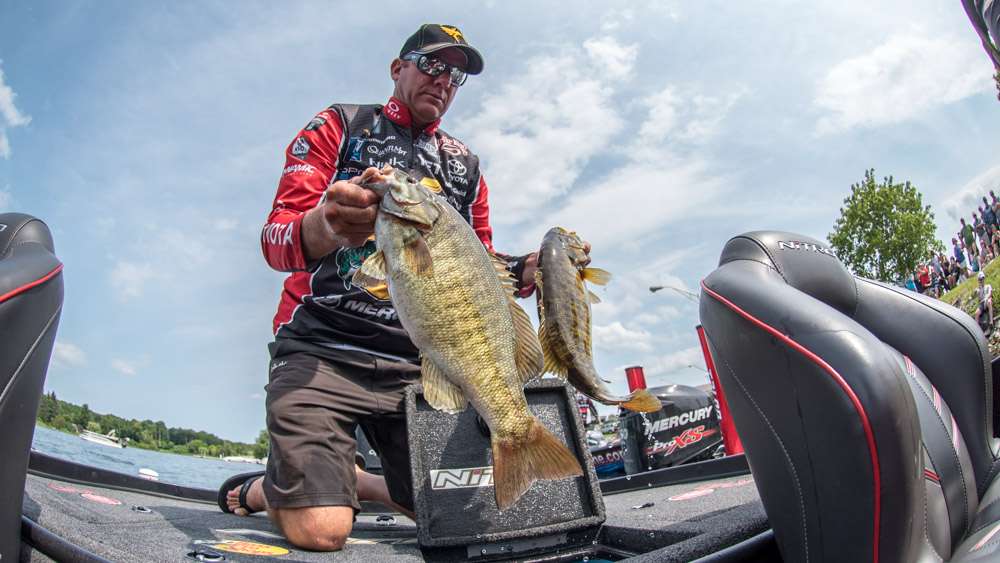
I don’t have to tell you how tough the competition is on the Bassmaster Elites and what a huge difference an ounce or two can make in the standings of a tournament. Subsequently, small weights can affect where you finish in the Toyota Bassmaster Angler of Year standings.
A huge part of that is fish management, especially on these good fisheries where we are catching a lot of similar-size fish.
Fish management involves many things, from maintaining a good livewell environment to keeping your bass healthy and culling out smaller fish efficiently.
If doesn’t matter whether it’s in a small club or in larger team or regional events, it’s just important.
For me, it starts with a good livewell system. My Nitro Z21 has separate livewells, and each has its own pump to draw in fresh water and recirculate the water that is in them. The Z21 also has an oxygenator to help keep fish healthy and a baffle system that protects them from getting banged around when running in rough water.
During stressful times of the year, such as during the spawn and the hot summer months, I periodically splash in some TH Marine G-Juice which helps keep fish calm and protects them from bacterial infection.
Even with these precautions, I’m checking my fish several times during the day to make sure everything is working and the fish are healthy.
Naturally, we need to protect our tournament-caught bass, but we don’t want to be penalized for dead fish, either.
The act of culling is equally critical to make sure you head to the weigh-in with the five heaviest fish you’ve caught during the day.
It’s also important that it’s done quickly and efficiently, as you need to make the right decisions and do so as quickly as possible, especially when you’re around biting fish.
I use the TH Marine G-Force Cull system that consists of an all-aluminum balance beam and six vinyl covered and different-colored culling lines with stainless steel hooks on the end. The top of each line has a loop which slips over the end of the balance beam for determining which of two fish is heavier.
It comes with a bracket that I mount under one of my livewell lids which gives me immediate access and keeps me organized during the process.
I currently use penetrating tags; the kind with stringer attachments. However, B.A.S.S. is mandating we use non-penetrating cull tags next season, so I will switch to the TH Marine G-Force Conservation Cull System which clamps on the lip and doesn’t puncture a hole in the fish.
I tag each fish I put in the livewell, putting the bigger fish I don’t expect to cull in one livewell and all of the others in the other side. I use the more obvious colors on those fish that appear smaller.
Once I catch the sixth fish that I believe could cull out a smaller one, I peg it with a line and put those fish on the balance beam to see which is heavier. I may go through this a few times with other smaller fish if the difference isn’t obvious.
After I determine which fish is smaller, I remember the color on that tag.
Now, some guys take the time to weigh every fish, but I’ve found the balance beams are more accurate when determining minute differences in fish weight.
Another key factor is to always have an extra cull line available; otherwise you may wind up with six fish in the livewell and, under B.A.S.S. rules, that’s a violation.
This is the most efficient and time saving system for me to make sure I go to the weigh-in with my heaviest – and healthiest – limit.
Whatever system you use, remember that an ounce or two can make a difference, and that it’s all about the attitude!
Kevin VanDam’s column appears weekly on Bassmaster.com. You can also find him on Facebook, Twitter and Instagram.

